 Fighting Dirty (Ultimate, #4) by Lori Foster
Fighting Dirty (Ultimate, #4) by Lori Foster Formats available: hardcover, paperback, ebook, audiobook
Series: Ultimate #4
Pages: 384
Published by HQN Books on February 23rd 2016
Purchasing Info: Author's Website, Publisher's Website, Amazon, Barnes & Noble, Kobo, Bookshop.org
Goodreads
He's the hottest MMA fighter in the game, but one woman is ready to try out a few steamy moves of her own in an unforgettable new novel from New York Times bestselling author Lori Foster...
With the life he's led and the muscles he's gained, Armie Jacobson isn't afraid of anything. Except maybe Merissa Colter's effect on him. It's not just that she's his best friend's little sister. Fact is, she deserves better. Women pursue him for one night of pleasure, and that's all he wants to offer. Until rescuing Merissa from a robbery leads to the most erotic encounter of his life.
Good girl meets bad boy. It's a story that rarely ends well. But Merissa is taking matters into her own hands. No matter how he views himself, the Armie she knows is brave, honorable and completely loyal. And as past demons and present-day danger collide, they're both about to learn what's truly worth fighting for…
My Review:
Considering that this looks like the last title in Foster’s Ultimate series, both the title and the story are very, very fitting.
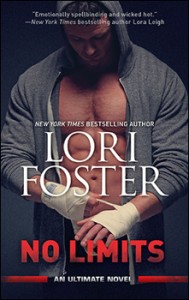 In every book in the Ultimate series, starting with No Limits (reviewed here) there is always someone who is fighting very, very dirty, and it isn’t the hero. Each of the stories in this series has a villain who starts out as a nasty piece of work and only gets worse as their story goes on – until they get their head figuratively handed to them and they get handed over to the law to get their just desserts.
In every book in the Ultimate series, starting with No Limits (reviewed here) there is always someone who is fighting very, very dirty, and it isn’t the hero. Each of the stories in this series has a villain who starts out as a nasty piece of work and only gets worse as their story goes on – until they get their head figuratively handed to them and they get handed over to the law to get their just desserts.
It’s always icing on that cake that the law officers who cart the bad guys away are the heroes of Foster’s previous series, Love Undercover. Which, if you are interested, starts with Run the Risk (reviewed here).
Bringing up that Ultimate spun off of Undercover is also fitting, because at the end of Fighting Dirty the author gives a sneak peak at the series that will spin off from Ultimate – Body Armor – starting in November with Under Pressure.
It’s always fun to jump into one of her series and see how everyone from the earlier series is doing!
If the title of Fighting Dirty is appropriate, the story is even more so. Through the entire series, the author has teased us with hints of Merissa Colter’s long-standing interest in Armie Jacobson, and Armie constantly running away from Rissy. It’s so obvious that he cares, and equally obvious that he’s decided that Rissy can do better than him. While it is equally true that he is being an idiot and not asking her what she thinks or wants, his reluctance is not completely far-fetched.
Rissy is Cannon Colter’s sister. Cannon is Armie’s best friend. If Rissy and Armie try a relationship and it doesn’t work, there will be no getting away from each other unless one of them gives up the circle of people they both call “family”. Additionally, and we’ve seen hints of this all along, there is something nasty in Armie’s past that he has been successfully keeping under wraps – and it’s a secret that he’s sure will kill both any chances he has with Rissy and any chances he has to be a success in the SBC.
 But at the end of Tough Love (reviewed here), Armie finally gives in and signs with the SBC. The powers-that-be in the SBC, Jude, Havoc (Havoc’s story is in Causing Havoc, the first book in her SBC Fighters series) and Simon, whose story is Simon Says, the second book in that series, are going to back Armie every step of the way in fighting that long-ago mess. Which turns out to be a bogus rape charge that everyone, including the cops, knew was a lie, but that was backed by a lot of threats from the liar’s rich and powerful daddy.
But at the end of Tough Love (reviewed here), Armie finally gives in and signs with the SBC. The powers-that-be in the SBC, Jude, Havoc (Havoc’s story is in Causing Havoc, the first book in her SBC Fighters series) and Simon, whose story is Simon Says, the second book in that series, are going to back Armie every step of the way in fighting that long-ago mess. Which turns out to be a bogus rape charge that everyone, including the cops, knew was a lie, but that was backed by a lot of threats from the liar’s rich and powerful daddy.
The interlinking series are lots of fun. And clearly a continuing theme.
So the story here is Armie finally letting Rissy into his heart and into his life. The danger turns out not to be from that old rape accusation, but from something much more recent, and all, unexpectedly, on Rissy’s side of the table.
The question is whether Armie can get out of his own way to protect Rissy from the slimeball in her own past, and whether Rissy can forgive him from being a self-sacrificing idiot before it’s too late.
Escape Rating B+: As you can probably tell from the above comments, I generally enjoy Foster’s series. Even though I don’t have reviews for all of them, I have read all of the series listed in the above text, and several others. She’s a go-to contemporary romance author for me.
At the same time, because I like her stuff, I also have quibbles. One of themes that runs through the Ultimate series is that the heroines always end up in jeopardy and the fighters rescue them, with or without their participation or consent. Also, with or without those heroines willingness to admit that they need protection. I don’t mind the rescuing, it’s the lack of participation and/or consent on the part of the heroines.
Rissy’s situation was kind of in the middle of that spectrum. Her spidey-senses are tingling, so she’s aware that there is trouble, but the bad guy starts out fairly subtle, and he isn’t an expected bad guy. In fact, his evil came from pretty far out in left field for this reader. His motives didn’t quite seem plausible, even though his evil was obvious to the reader early on, but only because we saw scenes that Rissy didn’t.
This reader, and I suspect many others, was incredibly glad to see that Armie and Rissy got their story before the series wrapped. This one has been brewing for a long time, so it was great to see it resolve before the story moves to the next series.
As a personal comment, I will say that once the reader discovers the whole of Armie’s backstory, his reluctance to be in the spotlight or enter into a relationship make sense. However, I wish that the cause had not been a fake rape charge. There are too many tropes in the media about how many women pretend to be raped for whatever reason, when in fact the numbers are minuscule. I wish this had been something else, because that’s a beast I don’t want to see fed in any form.
I liked both Armie and Rissy a lot. We’ve seen their characters throughout the series, and it was good to see them finally get a happy ending with each other. Armie’s outrageousness is a ton of fun, and Rissy does a great job walking a fine line between being independent and letting her brother look after her a bit because he needs it, not because she does.
All in all, a good wrap to a fun series. I can’t wait to see Leese’s story in Under Pressure. He’s turned out to be a great guy after a rocky start, and deserves his own happily-ever-after.
Cover Spotlight: No Limits by Lori Foster
Want to know what goes into making a sexy, MMA-themed cover? Read on to find out more about the cover art for Lori Foster’s No Limits, the first book in the Ultimate series, as well as the book itself.

Here’s what Art Director Kathleen Oudit had to say:
“Illustrations for Lori Foster books are always focused on a dramatically lit, strong male physique/character. For the entire “Ultimate” series we will depict men with fighter’s physiques, and subtle cues from the MMA environment such as hand wraps, simple gym clothing etc. But, we will always use these props “lightly” and we have deliberately kept the background non-recognizable–we are subtly directing the viewers emotion to the hero’s character and romantic journey–rather than his “matches”. It is important to skirt this line carefully or we risk making Lori’s covers look like a men’s health magazine!”
 About the author: Since first publishing in January 1996, Lori Foster has become a USA Today, Publisher’s Weekly and New York Times bestselling author. Lori has published through a variety of houses, including Kensington, St. Martin’s, Harlequin, Silhouette, Samhain, and Berkley/Jove. She is currently published with HQN. Visit her online at LoriFoster.com.
About the author: Since first publishing in January 1996, Lori Foster has become a USA Today, Publisher’s Weekly and New York Times bestselling author. Lori has published through a variety of houses, including Kensington, St. Martin’s, Harlequin, Silhouette, Samhain, and Berkley/Jove. She is currently published with HQN. Visit her online at LoriFoster.com.~~~~~~ TOURWIDE GIVEAWAY ~~~~~~
Lori is giving away the entire Ultimate series to one lucky entrant!


 My Sweet Vidalia by
My Sweet Vidalia by 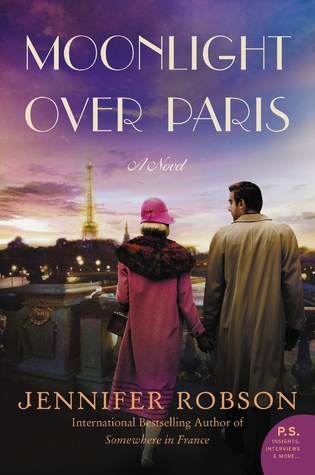 Moonlight over Paris by
Moonlight over Paris by  Moonlight Over Paris is the follow up to the author’s lovely
Moonlight Over Paris is the follow up to the author’s lovely  Escape Rating B+: I enjoyed Moonlight Over Paris, and was just as wrapped up in this story as I was in its predecessors. But Moonlight seems like a smaller and more intimate story than either of the first two books.
Escape Rating B+: I enjoyed Moonlight Over Paris, and was just as wrapped up in this story as I was in its predecessors. But Moonlight seems like a smaller and more intimate story than either of the first two books.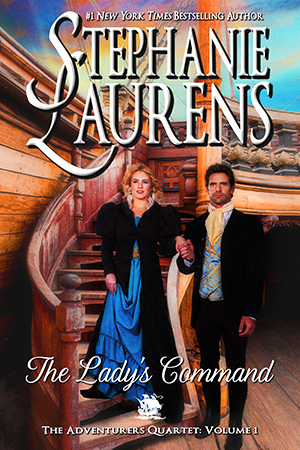 The Lady's Command (The Adventurers Quartet, #1) by
The Lady's Command (The Adventurers Quartet, #1) by 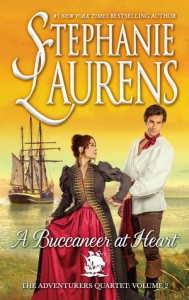 So we see Declan and Edwina establish the future path for their relationship, and the future path for the investigation into what’s going wrong in Freeport. Further steps in the investigation will be someone else’s to discover in the succeeding volumes of
So we see Declan and Edwina establish the future path for their relationship, and the future path for the investigation into what’s going wrong in Freeport. Further steps in the investigation will be someone else’s to discover in the succeeding volumes of  Night Hawk (Jackson Hole, #10) by
Night Hawk (Jackson Hole, #10) by 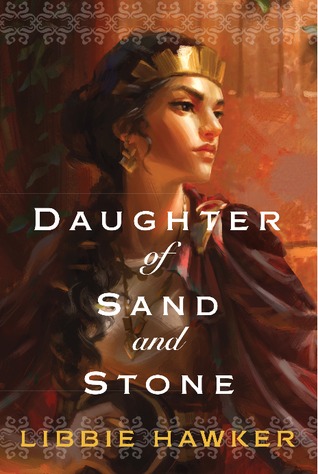 Daughter of Sand and Stone by
Daughter of Sand and Stone by 
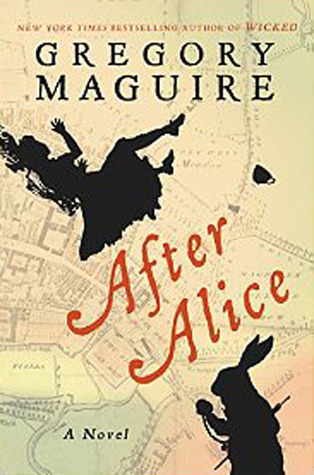 After Alice by
After Alice by 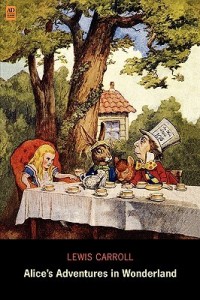 Alice’s Adventures in Wonderland
Alice’s Adventures in Wonderland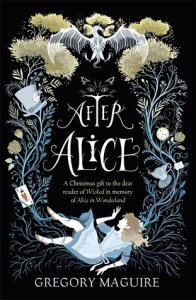 Like Alice’s own journey, Ada’s contains a surprising amount of commentary into her time and place, disguised in the nonsensical, but not actually nonsense, journey through Wonderland.
Like Alice’s own journey, Ada’s contains a surprising amount of commentary into her time and place, disguised in the nonsensical, but not actually nonsense, journey through Wonderland.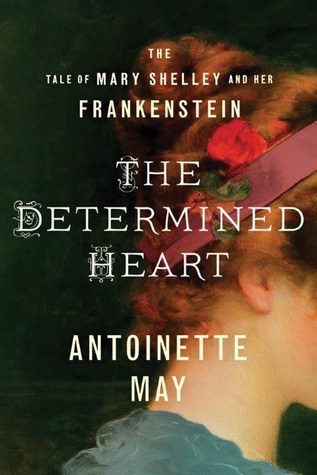 The Determined Heart: The Tale of Mary Shelley and Her Frankenstein by
The Determined Heart: The Tale of Mary Shelley and Her Frankenstein by 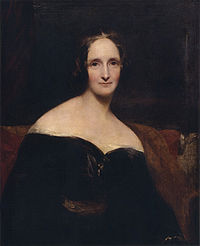
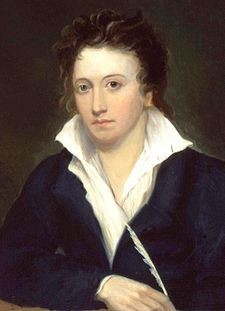

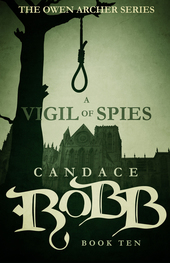 A Vigil of Spies (Owen Archer, #10) by
A Vigil of Spies (Owen Archer, #10) by 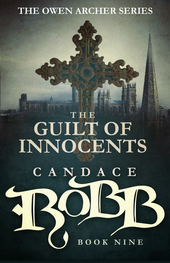 The story in this 10th book in the
The story in this 10th book in the 
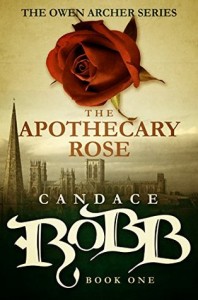 Owen makes an interesting and effective investigator. While he moves within all of these worlds, he is not a part of any of them. He is a soldier, but he works for the church. His wife is a respected master in the city, but he is not a member of any of the craft guilds. For a one-eyed man, he sees very clearly indeed. And because he is not partial to any of the groups involved, he is able to trace a clear path to the real killer without being blinded by shared interests or family ties.
Owen makes an interesting and effective investigator. While he moves within all of these worlds, he is not a part of any of them. He is a soldier, but he works for the church. His wife is a respected master in the city, but he is not a member of any of the craft guilds. For a one-eyed man, he sees very clearly indeed. And because he is not partial to any of the groups involved, he is able to trace a clear path to the real killer without being blinded by shared interests or family ties.